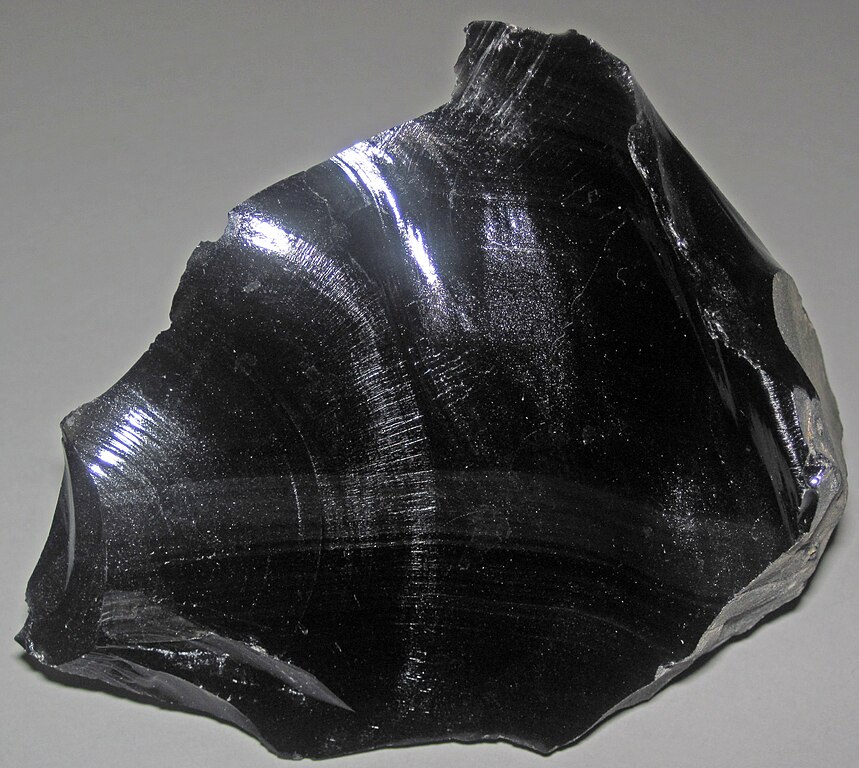Obsidian
When a volcano erupts or oozes out lava, it can form several different kinds of rock, such as basalt, Pele’s hair, pumice, or obsidian. Obsidian is what is commonly called “volcanic glass,” and because it comes from molten rock, it’s an igneous rock. It turns to volcanic glass instead of something with a grainy texture because it cools too quickly to form tiny grainy crystals, like you’d find in the rock named marble or the mineral named jasper. It also helps that obsidian contains a lot of silicon, like normal glass does, as that also gets in the way of crystals forming before the lava hardens. Obsidian is almost always black, but sometimes it can be brown instead if it includes the right amount of iron or another metal. You can find it in different parts of solidified lava, but one of the coolest kinds of obsidian is one that’s formed by globs of lava that solidify inside a softer lava rock then are left behind when the soft stuff erodes away. These solidified globs have a sad name though, as they’re called Apache tears, named after the tears that Native American families cried when many members of the Apache tribe died in a fight with U.S. government troops in the 1800s. On a more positive note, another cool type of obsidian is called snowflake obsidian because it includes lots of tiny crystals of a silicon mineral called cristobalite, which although they can only form at very high temperatures, when they do, they look like snowflakes!
| Formula | Group or Type | Shape | Hardness | Specific Gravity | Streak | Luster |
|---|---|---|---|---|---|---|
| — | — | — | 5–6 | 2.4 | — | — |
